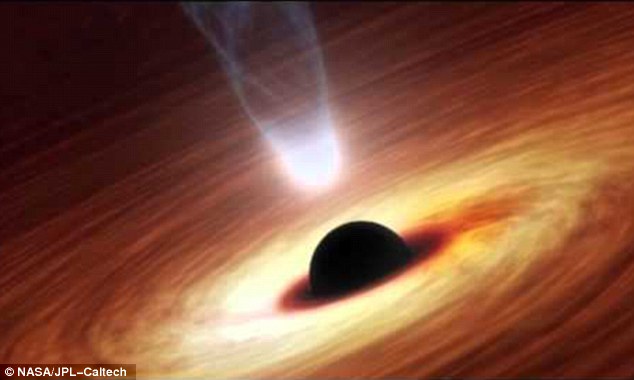Scientists have discovered the fastest-growing black hole known in the universe. They described it as a monster equal to a mass of 20 billion suns and that devours a mass equivalent to our Sun every two days, yielding a growth rate of 1 percent every 1 million years.
They found the supermassive black hole in the far reaches of the cosmos, 12 billion light-years away.
“This black hole is growing so rapidly that it’s shining thousands of times more brightly than an entire galaxy, due to all of the gases it sucks in daily that causes lots of friction and heat,” said Christian Wolf from Australian National University (ANU).
“If we had this monster sitting at the centre of our Milky Way galaxy, it would appear 10 times brighter than a full moon. It would appear as an incredibly bright pin-point star that would almost wash out all of the stars in the sky,” said Wolf.
Wolf and his colleagues were able to study the massive black hole with the help of the SkyMapper telescope at the ANU Siding Spring Observatory, which rendered the object in infrared. Because the supermassive black hole is so far away, its light red-shifted during its long journey to Earth.
“As the universe expands, space expands and that stretches the light waves and changes their colour,” Wolf said.
The European Space Agency’s Gaia satellite was also essential to the discovery. Gaia is working its way toward compiling the largest and most precise 3D space catalogue in history, measuring tiny motions of millions of celestial objects.
Gaia failed to measure any movement, only extreme luminosity, suggesting the object was far away and very large — likely a massive quasar. The spectrograph on the ANU 2.3 meter telescope helped astronomers confirm the supermassive black hole’s identity.
Wolf said as these kinds of black holes shine, they can be used as beacons to see and study the formation of elements in the early galaxies of the universe. “Scientists can see the shadows of objects in front of the supermassive black hole,” he said.“Fast-growing supermassive black holes also help to clear the fog around them by ionising gases, which makes the universe more transparent,” he added. Instruments on very large ground-based telescopes being built over the next decade would be able to directly measure the expansion of the universe using these very bright black holes, Wolf said.




















































